Køge,Denmark 作者: 来源: 发布时间:2021-09-28
一、人口,面积,所属地区
Population: 60,979
Area: 255 km²
Municipality in Sjælland
二、自然地理
Køge Municipality is a municipality in Region Sjælland on the east coast of the island of Zealand (Sjælland) approx. 40 km southwest of Copenhagen. Køge Municipality is not only privileged by being close to the capital, but is also surrounded by beautiful nature. The characteristic forest landscape with manor houses, fields, villages and forests as well as Køge Å and the forests at Køge Ås invite you to go out in the blue.
The main town and the site of its municipal council is the town of Køge. Suburbs inside the urban area of Køge include Køge Nord (Ølby Lyng and Ølsemagle Lyng) to the north and Herfølge to the south. Towns inside the municipality but outside the central urban area include Borup, Ejby, Bjæverskov, Lille Skensved, Lellinge and Algestrup.
Køge is a seaport on the coast of Køge Bugt (Bay of Køge) 39 km southwest of Copenhagen. It is the principal town and seat of Køge Municipality, Region Sjælland, Denmark. The natural harbour and strategic location have given Køge a long history as a market town. Today, that past is evident in a well-preserved old town centre with many half-timbered houses.
Køge is in the Copenhagen metropolitan area and is connected to downtown Copenhagen by the E line of the S-train commuter rail system. Køge is also on a new rail line under construction between Copenhagen and Ringsted, and due for completion in 2018. The new line will make Køge a central hub in Denmark's transport system.
Køge is located at the bottom of Bay of Køge, demarcated by Copenhagen to the north and the Stevns Peninsula to the south, where Køge Å (Køge Creek) meets the sea. Apart from Køge proper, the town's urban area consists of the suburbs of Køge Nord (Ølby Lyng and Ølsemagle Lyng) to the north and Hastrup and Herfølge to the south.
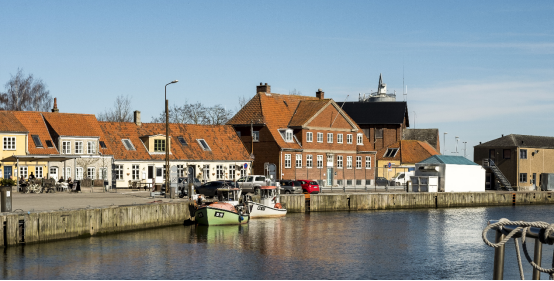
Transport
The city is a traffic hub. The motorways ensure the connection to the north, west and south, and there is a well-developed railway network with regional trains and S-trains.
The partial Y interchange, where the Danish part of the motorway E20 meet the Danish part of the motorway E47 and E55, is located only few kilometers northwest of Køge.
Køge station is the principal railway station of the town. There are also railway stations in the northern suburb of Ølby Lyng and in the southern suburb of Herfølge.
The Port of Køge is one of the oldest ports in Denmark but has been modernised over the last few years. Since 2002, there has been a ferry connection to Rønne on the Baltic island of Bornholm, operated by BornholmerFærgen.
三、经济发展和规模
The municipality's operating expenses were DKK 37 million. DKK less than the adjusted budget, and of this transfer of DKK 24 million DKK 2018 expenses, which for various reasons will only be paid in 2019. This gave us a tax result in the tax-financed area of just DKK 16.9 million. DKK from what we expected.
The economy in Denmark remains good, and it is affecting growth and employment in Køge Commune. Unemployment is down to 3.5 per cent. in Køge against 4.0 per cent. nationally, and below 1,000 citizens of the workforce are out of work. It is the lowest unemployment rate in 10 years.
The total cash withdrawal on cash and cash equivalents is DKK 29.8 million. kr. excl. price adjustments, which is 62.6million. DKK less than the original budget, which was budgeted with a cash draw of DKK 92.3 million. Kr. In total, this means that the cash withdrawal in 2018 has been DKK 62 million. DKK less than originally budgeted, but the total liability for cash withdrawals in 2019 has increased by DKK 68.5 million. kr
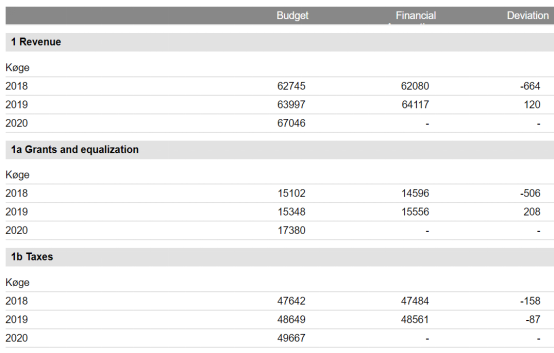
*All amounts are in DKK per. per capita in current prices.
四、产业特点重点项目
The location of the property just 40 km south of Copenhagen offers many advantages. The city is an integral part of the metropolitan area's business community. The port is directly connected with the Scandinavian Transport Centre, a large business park on the northwestern outskirts of Køge, where – among others – the headquarters and the Danish distribution centre of the multinational, Danish-founded, discount supermarket chain Netto is located.
Throughout the years, Køge has been known as a strong and traditional industrial municipality, where large companies have led the municipality's development. They still do. But during these years, we are also experiencing significant growth in services, trade, transport and logistics, among other things, where new companies of all sizes are popping up. This growth is incredibly positive, for the new companies have both many strengths and many development potentials.
Køge Municipality is taking major exciting development steps these years, which are not many other municipalities. Køge Municipality is in the process of developing into a regional power center. Construction of a main hospital, development of a new urban area in the Køge Coast, new railway and station in Køge Nord, Campus Køge and the establishment of a land depot are among the many perspectives that will influence and develop the municipality in the coming years.
During these years, the Municipality of Køge is in a special situation. By 2020, the Køge area will develop into a regional power center that will attract more businesses and new citizens with attractive conditions for business, better motorways and faster trains, new attractive residential areas, more educational institutions and a diverse cultural and leisure life. At the same time, the municipality's economy is under pressure. We get less money for welfare and more citizens asking for help.
The Municipality of Køge has pushed itself, to create as much development as possible in and around Køge. This includes the construction of the new university hospital and the Copenhagen-Ringsted course with a new station in Køge Nord. Now we must have implemented the development for the best possible benefit to our own citizens.
Køge Municipality is at the forefront of the future by focusing on:
1) Development and responsibility: to be a municipality where we lift together and create new welfare - together
2) Proximity and influence: to be a municipality where we create increased closeness and better dialogue with each other
3) Workplace in development : to be a municipality where we are professionally in the shoes, curious and open.
Ongoing development projects:
New Business Port
Køge Municipality is building a brand new, modern commercial port, which will be completed around 2022.
The Port of Køge is one of the oldest ports in the country today - and measured on freight, one of the larger ports. However, the ambitions go further. In order to strengthen the transport and port sector of the City of Copenhagen - and at the same time make room for urban development on the Port of Søndre - a new commercial port will be established in the northern part of the port area.
With 2300 meters of new quay and a water depth of 8.5-9.5 meters, the new commercial port will be twice the size of the old port. It allows larger vessels to receive up to 200 meters in length and 30 meters in width. The port will also accommodate a brand new, huge land area of 400,000 m2 for various business activities. At the same time, however, 100,000 m2 and 600 berths are disappearing at Søndre Havn, which is part of the Køge Coast project.
925 meters of quarry in the northern part of the harbor have already been built, while the approx. 950 meters of rock gravel with public access in the southern part is expected to be completed during the fall of 2016. Preparatory work for the 25 hectare new unit terminal with ro-ro traffic with an element of container transport has also been started. The terminal is expected to be completed by December 2017.
The establishment of the new port began in 2007 with Køge Jorddepot, which through filling with clean and slightly polluted soil from the many construction projects in Zealand will create more port space.
The new commercial port, together with the Scandinavian Transport Center and the upcoming Copenhagen-Køge-Ringsted railway, will strengthen the development of a strong logistics and transport sector in Køge - and thus secure more local jobs.
In order to meet the future demands for CO2 reductions and climate improvements, the Municipality of Køge is also investigating the possibilities of installing large wind turbines at the port's mole plant.
It will not only be ships and companies that will benefit from the new commercial port. One of the side benefits of the expansion of the Port of Køge is that Køge Marina can also grow and develop for the benefit of boat owners and citizens alike. In the future, Køge Marina will offer a wider range of cultural services to citizens and tourists. Already in 2014, a new and better bathing beach opened on the North Beach.
Expansion of Scandinavian Transport Center
Køge Municipality expands Scandinavian Transport Center (STC), which is well on its way to being Northern Europe's fastest growing business area - and one of Zealand's largest total business and transport areas.
With its unique location near three highways, rail and port, STC has since 2001 created a dynamic transport center with many large companies and still demand on several grounds.
The 1300,000 m2 area has therefore been expanded by an additional 500,000 m2 to the north between Ølsemaglevej and Lille Skensved to meet the demand of companies who would like to place their business activities here - typically in warehousing, transport and distribution.
With companies like Netto, Lidl, OK, NCC, Nyscan and Nomeco, STC has got the blue stamp of business. Today, there are 20 large companies and more than 1,000 people employed at the transport center, which is an important local and regional workplace.
The new buildings in the STC extension can be built up to 30 meters in height. When trees and shrubs around the transport center have grown to, the center will mark itself on the large scale, but at the same time fall into the local environment.
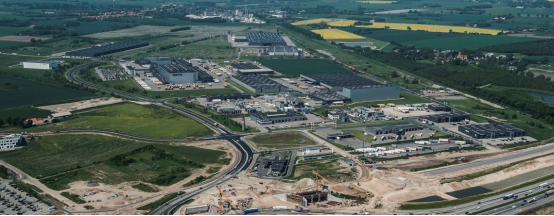
五、风景名胜,景点
Køge Church - Tower Sct. Nicolai
Address: Kirkestræde 26, 4600 Køge
The tower is the oldest preserved part of the church and was raised as a 4-storey building c. 1324. The present bell chamber was added in the 15th century as the fifth storey.
The east side of the tower’s top storey has a brick bay, a lighthouse lamp from c. 1400. In the tower’s bell chamber hang five bells from the 15th and 16th centuries.
The length of the church, including tower, is 57.5 metres, width 22.75 metres.The tower is 43 metres high.
The church was completed around 1450.
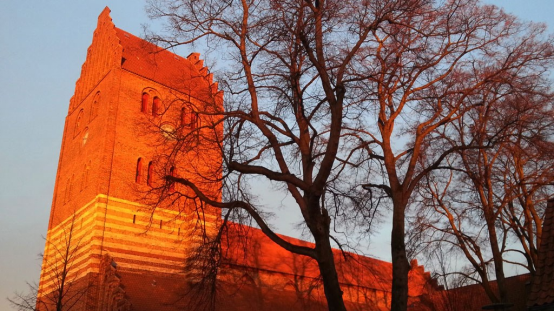
Valloe Castle park
Address: Slotsgade 4, 4600 Køge
The park was originally built in the early 18th century, shortly afterwards the garden was transformed into the current open English garden style.
At the end of the last century the great fashion was to gather rare trees and Vallø Castle Park has preserved many of these.
The castle park provides a beautiful and elegant setting for Vallø Castle. The park, stretching over 15 ha, is built in English landscape style with large lawns and many groups of old trees.
From the castle park - with the lawns and suitable paths - there is a slippery transition to Vallø Dyrehave, where nature is allowed to frolic more on its own terms. The further away you come from the Castle, the less care of the area there is. The lake, located between Slotsparken and Dyrehaven, were created as an employment project in 1878-80.
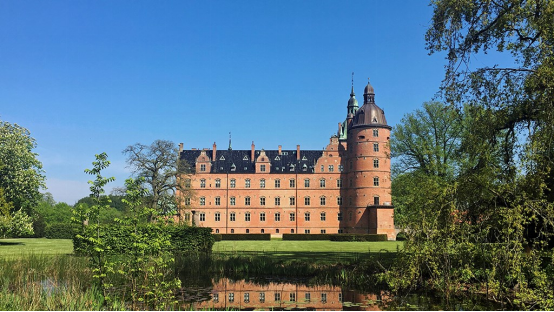
六、历史文化
As a result of Kommunalreformen ("The Municipal Reform" of 2007), on January 1, 2007, the prior Køge municipality was merged with Skovbo Municipality to form the new Køge municipality.
Like most Danish cities, the origins Køge precedes written history. Køge was first recognized as an official market town in 1288, as a contrast to the ecclesiastical center at that time – Roskilde, and was an important merchant town during the late Middle Ages.
During the local witchhunt, called Køge Huskors (1608–1615), at least 15 people were convicted of witchcraft and burned at the stake. Køge suffered during the wars between Denmark and Sweden (1643–1720). In 1807, the town and surrounding area was the scene of the Battle of Køge between British and Danish troops. Køge remained a small town until the late 19th century, when industrial development and population growth began. Today, Køge is the main part of the 18th largest urban area in Denmark.
Museums
Køge Museum is located at 4 Nørregade in a preserved former merchant's house from the year 1619. Further down the street, in No. 29, lies KØS - museum of art in public spaces. It is the only art museum in Denmark dedicated specifically to sketches and models for art works in the public realm. Among its holdings is the original model for The Little Mermaid in Copenhagen.
Architecture
The historical architecture of the town centre is one of the major attractions of Køge. The oldest dated half-timbered house in Denmark, which is also the oldest dated non-nobility and non-religious building of the nordic countries, can be found in Køge. It was built in 1527. Originally a section of a row of hovels, it is now a part of the public library. Pictures can be found in the gallery. The Third largest Viking Ring Fortress was found near the city of Køge, Denmark.
Near the house is Sankt Nicolai Church. The tower of the church contains a lighthouse, the first to be built in Denmark.
Køge's town hall dates from 1552 and is the oldest town hall in Denmark still in use as such.
Køge Torv, the market square, is, with an area of almost 1 hectare (2.5 acres), the largest town square in Denmark outside Copenhagen and the largest and best-preserved medieval town square in Denmark. There are fair days on the square Wednesday and Saturday.
Kjøge Miniby (Kjøge Mini-Town) is a historically correct model of the town from the year 1865 – built to a scale of 1:10.
Sports
The football club HB Køge was created through a merger of professional football between Herfølge Boldklub and Køge Boldklub in 2009. It currently plays in the Danish 1st Division. Their home ground is named Herfølge Stadion. It is used and serves as the primary training fields and facilities of the professional club, besides the now amateur mother club of Herfølge Boldklub. The Facilities is situated in the suburb of Herfølge, about 5 kilometres south of central Køge.
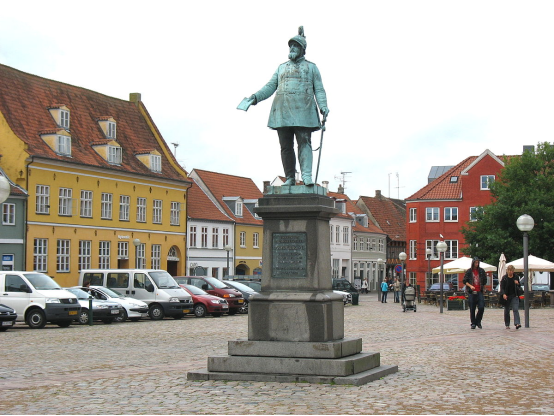
七、其他信息
The municipality's old medieval town of Køge is very well preserved because the Køge City Council has a tradition of conservation and urban improvement. The city therefore has many attractions to offer - and at least two historic Denmark records. Among other things. the oldest functioning town hall from approx. 1552 and the oldest dated half-timbered house from 1527. Køge is now living not only in the past. The municipality is known for having a rich cultural sports and leisure life, where there are versatile and exciting offers for the vast majority of cultural souls.
八、联系方式
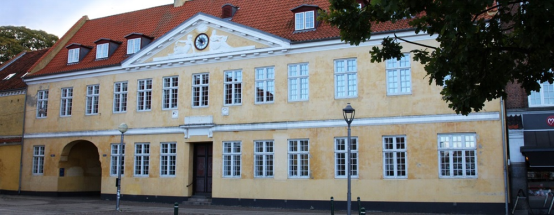
Mayor: Marie Stærke
Address: Køge Municipality, Torvet 1, 4600 Køge
Telephone: 56 67 67 67
mail: raadhus@koege.dk
Facebook: https://www.facebook.com/koegekommune
Website: https://www.koege.dk/
Office Hours:
Monday 9: 00 to 14.00
Tuesday 9: 00-14: 00
Wednesday 9:00 to 14:00
Thursday 12:00 to 18:00
Friday 9:00 to 13:00
